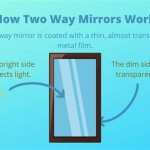How to Screen Mirror iPhone to Macbook Air M1
Screen mirroring allows you to wirelessly display your iPhone's screen on a larger display, such as a Macbook Air M1. This can be useful for various reasons, including presentations, watching videos, gaming, and even just sharing photos and videos with others. This article outlines the methods to screen mirror an iPhone to a Macbook Air M1, providing a step-by-step guide for each approach.
Method 1: Using AirPlay
AirPlay is Apple's built-in wireless screen mirroring technology that allows devices to share content with each other. It's the most common and straightforward way to mirror your iPhone to a Macbook Air M1.
To screen mirror using AirPlay, follow these steps:
- Ensure both devices are connected to the same Wi-Fi network: AirPlay relies on a local network connection to function. Confirm that both your iPhone and Macbook Air M1 are connected to the same Wi-Fi network.
- Open Control Center on your iPhone: Swipe down from the top-right corner of your iPhone's screen (or swipe up from the bottom edge on older iPhones) to access the Control Center.
- Tap the "Screen Mirroring" icon: This icon typically looks like a rectangle with a triangle pointing outwards. It may require a second tap to reveal the available devices.
- Select your Macbook Air M1 from the list: Your Macbook Air M1 should appear in the list of available devices. Tap on it to start screen mirroring.
Once selected, your iPhone screen will be mirrored on your Macbook Air M1's display. You can use your iPhone as usual, and everything that appears on your iPhone's screen will also be reflected on your Macbook Air M1. To stop screen mirroring, simply tap the "Stop Mirroring" button in your iPhone's Control Center.
Method 2: Using a Third-Party App
If you're experiencing issues with AirPlay or require additional features, consider using a third-party screen mirroring app. Numerous apps on the App Store offer screen mirroring functionality, some with advanced features like recording, audio mirroring, and more.
Here are the general steps to use a third-party app for screen mirroring:
- Download and install the app on your iPhone: Choose an app from the App Store that suits your needs and download it on your iPhone. Popular options include Reflector 3, AirServer, and LonelyScreen.
- Connect your iPhone and Macbook Air M1 to the same Wi-Fi network: Ensure both devices share the same Wi-Fi connection for reliable mirroring.
- Open the app on your iPhone: Launch the app and grant it the necessary permissions to access your screen and audio.
- Start screen mirroring: The app's interface will guide you through the process of starting screen mirroring, usually by selecting your Macbook Air M1 from a list of available devices.
Every app works slightly differently. Refer to the app's documentation or help section for specific instructions. Once the connection is established, your iPhone's screen will be mirrored on your Macbook Air M1. You can use the app's settings to control additional features like audio mirroring and recording.
Method 3: Using a USB Cable
While less common, screen mirroring can be achieved using a USB-C to Lightning cable, especially for troubleshooting purposes. This method bypasses wireless limitations and directly connects your iPhone to your Macbook Air M1.
To screen mirror through a USB cable, follow these steps:
- Connect your iPhone to your Macbook Air M1 using a USB-C to Lightning cable: Plug one end of the cable into your iPhone's Lightning port and the other into your Macbook Air M1's USB-C port.
- Trust the connection on your iPhone: A pop-up notification will appear on your iPhone asking if you trust the connected device. Tap "Trust" to proceed.
- Open "QuickTime Player" on your Macbook Air M1: Launch QuickTime Player from your Macbook Air M1's Applications folder.
- Select "File > New Movie Recording": In the QuickTime Player menu bar, click "File" and then select "New Movie Recording."
- Choose your iPhone as the recording source: In the QuickTime Player window, click the dropdown arrow next to the record button and choose your iPhone as the input source.
Your iPhone's screen will now be mirrored on your Macbook Air M1's QuickTime Player window. You can pause, stop, and record the mirrored screen as needed. Remember, this method uses your Macbook Air M1's screen as a recording device and might not be ideal for live presentations or extended viewing.

How To Mirror Iphone Display Macbook Ios 12 Macos Mojave

2024 Updated How To Mirror Iphone Mac With 5 Methods

Screen Mirroring Iphone To Macbook Pro M1 Wirelessly Ios 15 Macos Monterey

How To Screen Mirror Iphone Macbook 2024

2024 Updated How To Mirror Iphone Mac With 5 Methods

Free How To Mirror Iphone Screen Macbook Air Pro

Screen Mirroring On Your Macbook Air

How To Airplay From Iphone Or Ipad Mac 9to5mac

Screen Mirroring Iphone To Macbook Pro M1 Wirelessly Ios 15 Macos Monterey

Apple Sidecar On M1 Macbook Air Mirror Your Display An Ipad








